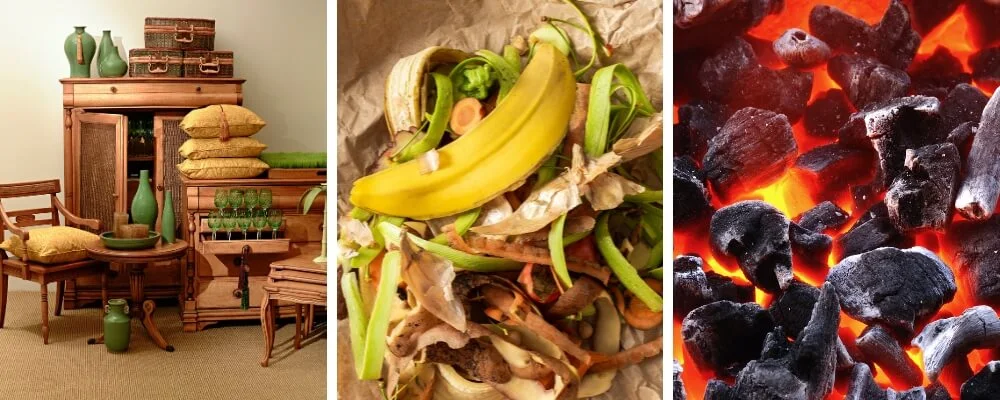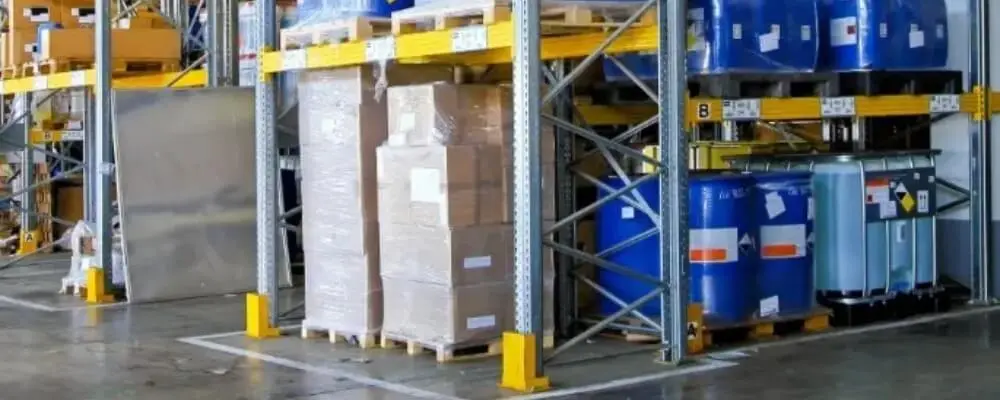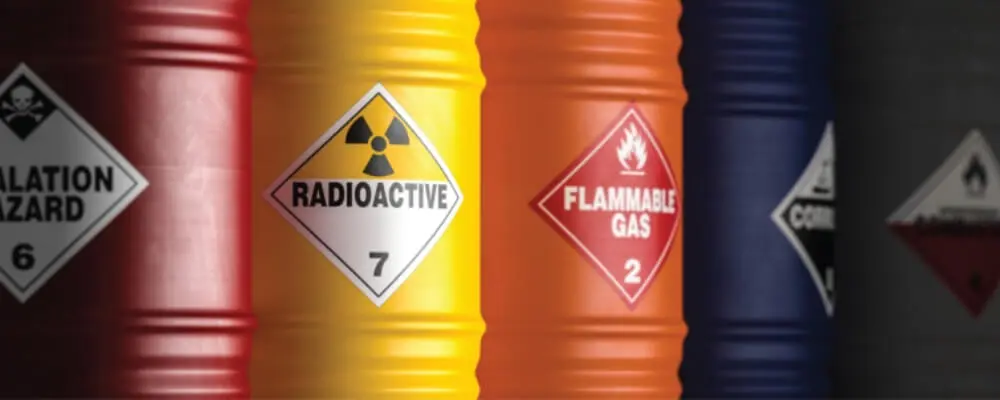Fire is a force of nature that has shaped human civilization since immemorial. It has provided light, warmth, and essential energy for progress but poses one of the most significant threats to our safety. Understanding the materials that can fuel these flames is vital to safeguarding ourselves and our surroundings from potential disaster.
In this blog, we delve into the world of combustible materials, identifying 15 common examples that have the potential to ignite and spread fire rapidly. From everyday household items to industrial substances, we’ll explore the diverse range of materials that can become hazardous under certain conditions.
By shedding light on these combustible materials, we aim to raise awareness about the importance of fire safety and prevention. Whether at home, in the workplace, or in any public setting, being informed about the risks associated with these materials empowers you to take proactive measures to mitigate the chances of a fire breaking out.
Join us on this journey as we uncover the properties of these combustible materials, learn how to handle them responsibly, and discover the critical steps to take in the event of a fire emergency. Let’s equip ourselves with knowledge and make safety a priority in our daily lives. Together, we can make a significant difference in preventing fire incidents and protecting the people and places we hold dear.

What are Combustible Materials?
Combustible materials are substances that can ignite or burn when they are exposed to a heat source. Combustion is a chemical process in which a substance reacts with oxygen to produce heat, light, and other byproducts. The heat produced can cause more of the material to react with oxygen, creating a self-sustaining process that we usually see as fire.
The ease with which a material will combust depends on several factors, including its chemical composition and physical properties. Some materials, like gasoline or paper, can combust easily at relatively low temperatures. Other materials, like glass or steel, require high temperatures to ignite and burn.
Combustible materials can be solid, liquid, or gas. They can be organic, like wood or cotton, or inorganic, like certain metals. They can be naturally occurring, like coal or petroleum, or man-made, like plastic or synthetic fabrics.
In practical terms, understanding which materials are combustible is important for preventing fires and ensuring safety. Combustible materials must be stored and handled properly to reduce the risk of accidental ignition. In many places, specific regulations and safety guidelines must be followed when dealing with these materials.

15 Different Combustible Materials Examples
Combustible materials can ignite or burn, typically producing heat or light. Examples include:
1. Wood
This includes all types of untreated lumber, hardwoods, softwoods, plywood, and chipboard. Wood is organic, carbon-rich material that catches fire easily when exposed to a heat source. The danger with wood is not just the initial combustion but the creation of hot embers that can spread the fire to other locations.
2. Paper
Paper products, such as newspapers, cardboard, books, envelopes, and packaging materials, are highly combustible due to their thin, porous structure, allowing for rapid heat absorption. Like wood, the danger with paper isn’t just the flames but the potential for flying embers to start a fire elsewhere.
3. Clothing
Different fabrics have different flammability levels. Natural fibers like cotton and wool can easily catch fire, while synthetic fibers like polyester and nylon melt and stick to the skin, causing severe burns. The danger with clothing is that it is often in close contact with the body, and a fire can result in severe personal injury.
4. Flammable Liquids
Liquids like gasoline, alcohol, oils, and paints can ignite at relatively low temperatures (known as their flash point). These substances vaporize easily, and it’s actually the vapors that ignite and burn. The danger with flammable liquids is not just that they can burn but that they can explode under the right conditions.
5. Gases
Propane, butane, methane, and hydrogen gases are highly combustible. They can ignite and burn rapidly when mixed with air and exposed to a spark or flame. Gases can be particularly dangerous because they can fill a space quickly, and a single spark can cause an explosion.
6. Plastics
Many types of plastic, including PVC, polyethylene, and polystyrene, can ignite and burn, producing toxic fumes. The risk with burning plastics isn’t just the fire itself but the toxic gases they can produce, which can be harmful or even fatal when inhaled.
7. Certain Types of Metals
While we usually don’t think of metals as flammable, certain types like magnesium, titanium, sodium, potassium, lithium, and aluminum dust can burn intensely under the right conditions. This is especially true if the metal is ground into fine particles (like dust or shavings), increasing its surface area.
8. Organic Materials
This includes leaves, grass, hay, straw, and peat vegetation. These materials, when dry, can ignite quickly and burn rapidly, potentially leading to wildfires.
9. Certain Chemicals
Many chemicals can be combustible. For example, if stored or used improperly, certain types of fertilizers and cleaning supplies can ignite and burn. These substances can be dangerous not just because they can start a fire but because they can react with other chemicals to produce toxic fumes or explosions.
10. Coal and Charcoal
These materials are carbon-rich and can easily ignite when exposed to sufficient heat. Once burning, they produce a consistent, high-temperature flame. The danger is not just the flame but also the production of carbon monoxide, a deadly gas, if burnt in poorly ventilated areas.
11. Rubber
Both natural and synthetic rubber products can catch fire, although they generally require more heat to ignite than some other materials. Once ignited, they can burn very hot and produce thick, black, toxic smoke.
12. Insulation
Many forms of insulation, such as polystyrene or polyurethane foam, can burn if exposed to a high enough heat source. Fire-resistant treatments can improve their safety, but these materials can still be dangerous in a fire.
13. Household Waste
Many items in household waste, such as kitchen scraps, paper, cardboard, and plastics, can be combustible. This is why fires can sometimes start in trash cans or dumpsters.
14. Furniture
Many types of furniture can catch fire, particularly if they are made of wood, filled with foam padding, or covered in certain types of fabric. Older furniture can be particularly dangerous, as it may not have been treated with modern fire-retardant chemicals.
15. Flammable Aerosols
Many aerosol cans, such as those used for deodorant or spray paint, contain flammable propellants. These can explode if the can is punctured or exposed to a heat source.

Safety Rules For Combustible Materials
Handling and storing combustible materials properly is crucial to prevent fires and ensure safety. Here are some general safety rules for dealing with combustible materials:
- Proper Storage: Store combustible materials in a designated, well-ventilated area away from ignition sources. This includes heat sources, open flames, and sparks. The storage area should be equipped with appropriate fire extinguishing equipment.
- Container Safety: Only approved containers and tanks are used to store flammable and combustible liquids. The containers should be sealed to prevent the escape of vapors.
- Limit Quantity: Store the minimum amount of combustible materials necessary for operations. If you must store larger quantities, consider a separate, dedicated storage facility that meets fire code requirements.
- No Smoking: Strictly enforce a no-smoking policy in and around areas where combustible materials are used or stored. Post visible ‘No Smoking’ signs.
- Use Safety Equipment: Use safety cans for dispensing flammable or combustible liquids. Always have a fire extinguisher of the appropriate type nearby when handling or storing these materials.
- Dispose of Waste Properly: Dispose of waste and rags soaked with combustible materials in metal containers with tight-fitting lids.
- Training: Ensure all employees or individuals working with combustible materials are properly trained. They should know how to handle, store, and dispose of these materials safely, how to use fire extinguishing equipment, and what to do in an emergency.
- Ventilation: Provide good ventilation when using flammable or combustible substances. Vapors can build up and become a fire hazard if the area is improperly ventilated.
- Safety Data Sheets (SDS): Always keep and refer to the Safety Data Sheets (SDS) for each chemical used or stored on-site. The SDS will provide specific information about the chemical’s properties, health hazards, protective measures, and safety precautions for handling, storing, and transporting the chemical.
- Regular Inspection: Regularly inspect storage areas for leaks, spills, and signs of container damage.
Remember, these are general guidelines. Each type of combustible material has its own specific safety considerations, so always refer to the manufacturer’s instructions or the SDS for detailed safety information.
Conclusion
Understanding combustible materials is crucial for safety in our daily lives. These materials, which can ignite and burn when exposed to a heat source, are often household items. Examples include wood, used in construction and furniture; paper products, from newspapers to cardboard; clothing made from natural and synthetic fabrics; flammable liquids like gasoline and oils; gases such as propane and methane; plastics; certain metals like magnesium and sodium; organic materials like dry vegetation; specific chemicals, including some fertilizers; and coal or charcoal.
Further examples include rubber, insulation materials, household waste, furniture, flammable aerosols, fireworks, dry plants and trees, candles, cooking oils and fats, and tobacco products. By being aware of the combustible nature of these materials, we can handle and store them properly, reducing the risk of accidental fires and ensuring a safer environment.

